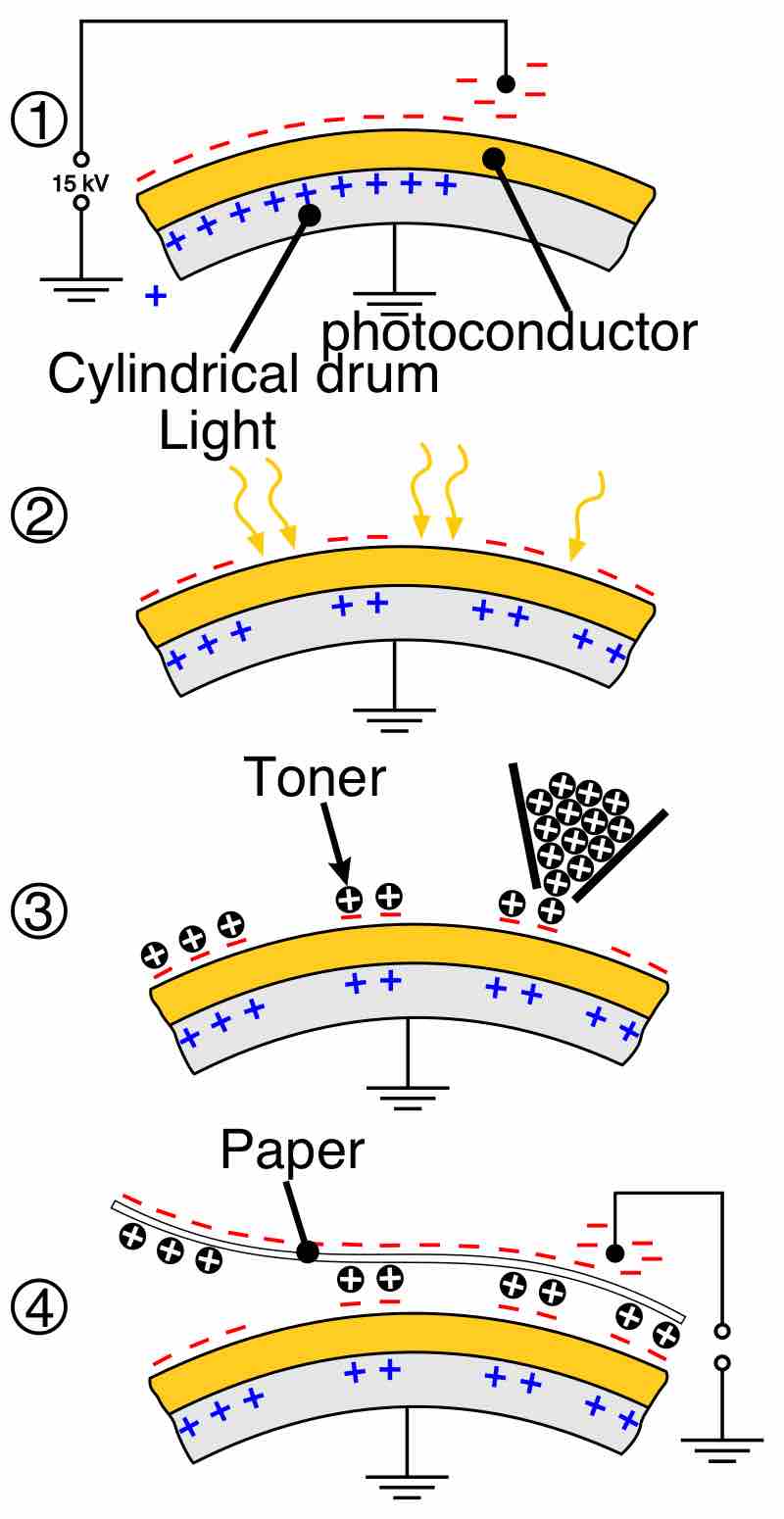A photocopier is a machine that prints copies of documents and images on paper. Currently, most photocopiers use a process called xerography, which is dry and uses heat in printing.
Different models of photocopiers vary somewhat in their methods, but the first instance of xerography involved use of a photosensor with a copy camera and a separate processing unit. To this day, xerography is conducted in a five-step process, in which electrostatics play an important role. This process is diagrammed in with explanations of each step outlined in the text below.

How a photocopier works
This image describes how a photocopier works.
Charging
In the first step of xerography, a high-voltage device (either a corona wire or charge roller) charges a cylindrical drum. This occurs by corona discharge, with output limited by a control grid or screen: a negative charge on the wire ionizes the space between the wire and conductor, so electrons are repelled and pushed onto the conductor. The conductor is put on top of a conducting surface and is kept at ground potential.
Polarity of charge can be altered depending on desired effects. A positive process is used to produce black on white copies, while a negative process is used to produce black on white from negative originals.
Exposure
A lamp illuminates the original document. The white areas of the original reflect light onto the surface of the drum, which exhibits photoconductivity (it becomes a conductor in the presence of light). The areas of the drum exposed to light then discharge to the ground; the other parts of the drum (which are not conductive, having not been exposed to light) remain negatively charged. Thus, the result is an electric image on the surface of the drum.
Developing
The toner, a powder used to form images on the paper, is positively charged. When it is placed on the drum, it is attracted to the negative (black) areas. This develops the image.
Transfer
The image with toner on the drum is transferred to a piece of paper with more negative charge than the drum.
Fusing
The toner is melted and bonded to the paper by heat and pressure rollers.
It should be noted that the explanation above is typical for modern copiers, but some older copiers use a positive drum and paper, and a negatively charged toner.